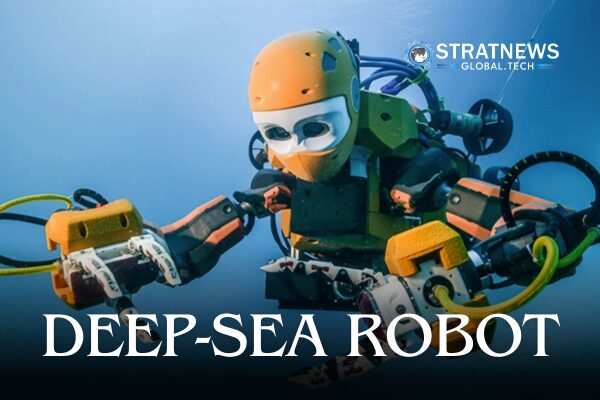Stanford’s Ocean Robot Brings the Sense of Touch to Deep-Sea Exploration
Robotics researchers at Stanford University have developed a new tool for ocean exploration: a remote-controlled humanoid robot that transmits the sense of touch to researchers miles away, OceanOneK.
The robot, named OceanOneK, is an advanced version of OceanOne, which in 2016 explored a 1664 shipwreck at a depth of 100 metres in the Mediterranean. The “OneK” in its name highlights its ability to dive to 1,000 metres, reaching depths far beyond human divers.
Exploring Shipwrecks and Submarines
In 2022, OceanOneK completed several missions in the Mediterranean Sea. The robot explored sunken aircraft, a World War II submarine, a Roman shipwreck from 200 AD, and other vessels. During one mission, it reached a depth of 852 metres, where it placed a commemorative plaque on the sea floor before returning it to the surface.
This robot connects to a boat on the surface, which can then link to the internet to allow remote operation. This connection opens the possibility for researchers worldwide to control OceanOneK and experience deep-sea exploration in real-time.
Bringing the Sense of Touch to the Deep Sea
OceanOneK’s standout feature is its ability to transmit the sense of touch to its operators. Using a haptic interface, researchers can “feel” what the robot touches under the sea. This capability allows scientists to interact with underwater environments with greater precision and care.
Oussama Khatib, Director of the Stanford Robotics Center, emphasised the unique abilities of OceanOneK. “The problem with most machines is they don’t have a way to interact. They don’t have arms and hands, and this is what makes this machine unique,” he explained.
Extending Human Reach into the Ocean
OceanOneK enables researchers to reach parts of the ocean that are too deep and dangerous for human divers. It allows scientists to study shipwrecks, collect samples, and inspect underwater sites while maintaining a connection to the physical world through touch.
With this development, Stanford’s robotics team is opening new paths for deep-sea research, making the ocean’s depths more accessible and interactive for scientific study.
with inputs from Reuters


